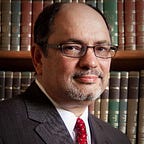History of Presidents Day: More than just Washington and Lincoln?
During my lifetime, two American holidays got consolidated into one. In 1971, a day between both Lincoln’s Birthday on February 12 and Washington’s Birthday on February 22 became a single holiday, Presidents Day — alternately spelled President’s Day or Presidents’ Day — to be observed on the third Monday in February, to honor all the past presidents of the United States.
History
When I was a school child, both Washington’s and Lincoln’s pictures were typically displayed prominently in school rooms. School children in many states have felt cheated out of an extra day off of school ever since with the two Presidents’ birthdays being combined into one holiday. Is this a way of consolidating holidays for advertisers for “Presidents Day Sales?” Certainly, some state and local governments observe it as Presidents Day. The Uniform Monday Holiday Act of 1971 established more three-day weekends. Nevertheless, Washington’s Birthdayis still observed by U.S. Federal employees, though it rarely falls on Washington’s actual birthday. His birthday was officially recognized as a holiday back in 1885. Lincoln’s Birthday on February 12 is not a Federal holiday, though some states observe it, going back to 1873 or 1874 in Buffalo, NY.
Though Black History Month finds its origin in 1926 as “Negro History Week,” and in the 1970s as Black History Month, it traces its history back to celebrations of Lincoln’s Birthday in the late 1800s.
George Washington
The Virginia native was known even during his lifetime as “the father of his country” though, between him and Lincoln, Abraham looked more like the father and George’s long hair made him look more like the mother. Nevertheless, George was a natural leader, standing 6’2″ amongst troops that stood 5’9″. He appeared at the Continental Congress in uniform, the natural choice for military leader. Many of the Founding Fathers graduated from the finest colleges in the land — Jefferson and Monroe went to William and Mary, Adams and Hancock went to Harvard, Madison went to Princeton (College of New Jersey), Jay, Livingston, and Hamilton went to Columbia (King’s College) — but Washington went to war. He had experience in battle in the French and Indian War in America, fighting for the English King George III, but the American Revolutionary War saw him fighting for independence against the same King that he had earlier served. Washington stood bestride two periods of American history, the end of the Colonial Period and the beginning of the National Period. He served only two terms as President of the new United States of America, though many would have supported his rule for life. Napoleon of France was amazed that Washington would step down when he didn’t need to.
Abraham Lincoln
The tallest American President at 6’4″, the Kentucky native is one of the most popular, best remembered, and most often written about Presidents in American history. He too served during a time of bitter warfare, again with brother fighting brother and neighbor fighting neighbor, this time though during the American Civil War, or what became known in the South as the War Between the States. While this great conflagration had many economic and political causes, Lincoln’s name remains associated with the abolition of slavery. Lincoln, like Washington before him, connected two periods of American history. In Lincoln’s case, he saw the end of the National Period and the very beginnings of the Modern Period which would follow the Civil War.
Two great wars, one for freedom of independent government, one for a different kind of freedom. More Americans died in the Civil War than all other wars Americans were ever involved in — because we count the dead on both sides.
Two great Presidents. The first remembered for selfless deeds who served as first President when he might have been king. The other for his great words that began to heal a nation after the largest battle ever fought on American soil. As Lincoln remembered those who fought and died at the Battle of Gettysburg he concluded:
It is rather for us to be here dedicated to the great task remaining before us that from these honored dead we take increased devotion to that cause for which they gave the last full measure of devotion, that we here highly resolve that these dead shall not have died in vain, that this nation under God shall have a new birth of freedom, and that government of the people by the people for the people shall not perish from the earth.
Bill Petro, your friendly neighborhood historian
www.billpetro.com
If you enjoyed this article, please consider leaving a comment, or subscribing to the news feed to have future articles delivered to your feed reader, or to your email. Please hold down the clap button below to help others find it. The longer you hold it, the more claps you give!
